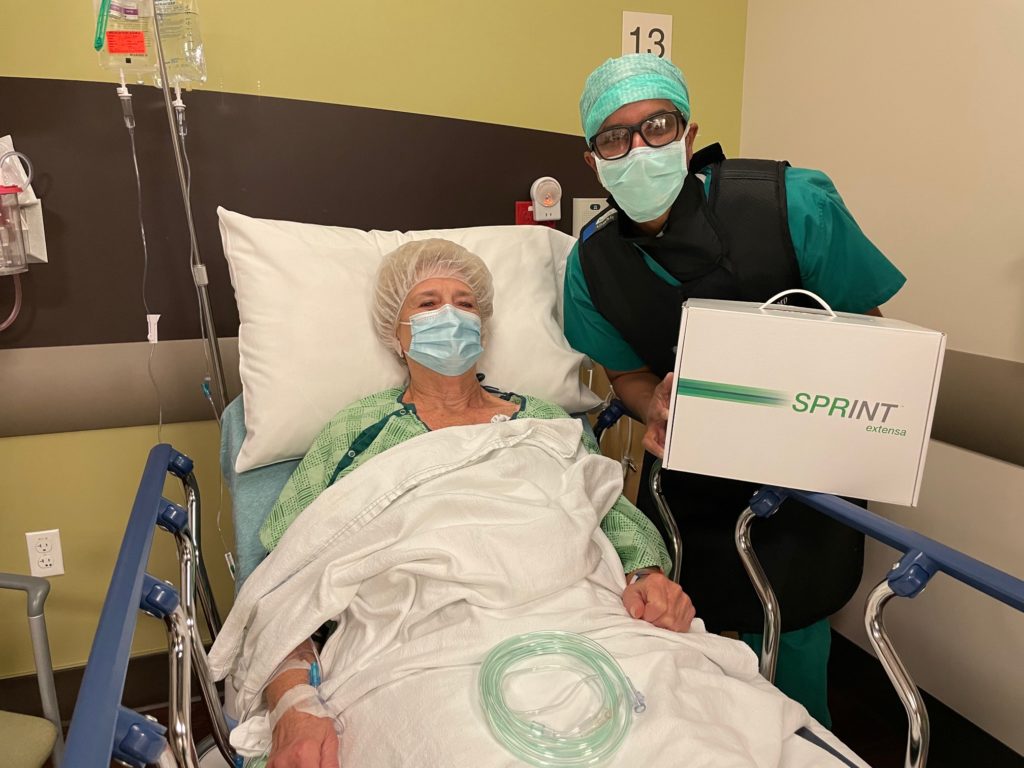
The field of pain medicine has evolved at a rapid pace in the last few years, and the SPRINT PNS System has been a leading innovation. Following its launch in 2017, SPRINT PNS reached 1,000 patients in 2019, and 2,000 patients in 2020. As of May 2021, the use of SPRINT PNS has more than doubled that pace, reaching an important milestone of 5,000 patients.
“It is so rewarding and with a great deal of gratitude to see how the collaboration with and passion of our physician partners around the country and of our SPR Therapeutics’ team has led to PNS becoming a leading pain management treatment over these past few years,” SPR Therapeutics CEO and President Maria Bennett said.
“When we developed SPRINT PNS, working collaboratively with physicians to create a new approach to treating patients suffering from pain, it was to think big and think beyond. Since hitting our 2,000th patient milestone in 2020, we have more than doubled the pace at which we hit that target as we moved on to our 5,000th patient. We look forward to seeing continued innovation and accelerated adoption as we work together to provide treatment to our next 5,000 patients.”
Patient 5,000 – Treated with SPRINT PNS for Chronic Back Pain After Pain Returned Following RFA

Our 5,000th patient was treated by Dr. Samir Sheth, a board-certified anesthesiologist and interventional pain specialist. with Sutter Health in Roseville, California. Dr. Sheth’s patient was suffering from low back pain along with neuropathy in her lower extremities. She’d tried and failed epidurals, facet injections and repeat radiofrequency ablation (RFA) procedures but the pain always returned.
“Despite trying RFA before and it being somewhat effective, she really was eager to try a non-destructive technology with the potential to provide longer term pain relief,” Dr. Sheth said. “She loves to dance, and I am hoping this helps get her back to that.”
SPRINT PNS Milestone Indicates the Promise of a New Pain Treatment Approach
Following his patient’s SPRINT PNS procedure, Dr. Sheth shared more about why this 5,000th patient is so important:
The biggest draw for me to include SPRINT PNS earlier is that it allows me to take a patient-centric approach and offer a non-destructive, non-permanent and non-surgical treatment option early in the algorithm. I find that SPRINT has broad applications within pain management that generally fit well within a patient-preferred paradigm.
I was originally thinking that [SPRINT] should be reserved for younger patients, but as I started to work with it more, I thought why not introduce such a minimally invasive, low-risk option for my older patients as well, Dr. Sheth said. For those with non-specific low back pain and/or patients with facet arthropathy, I would strongly consider the SPRINT system as a first-line option. It’s one of the reasons I opted to try SPRINT PNS for my recent back pain patient [SPR’s 5,000th].
To me, this milestone indicates that the SPRINT System is working, as most physicians would not adopt something that is not efficacious and safe. It also means that we are gaining some traction with therapy awareness, which is key to creating a new rung on the ladder-based formula we use in approaching pain treatment plans.
While short-term PNS is still a relatively new treatment option in the field, it is experiencing strong physician support, with continued potential for ongoing applications and growth. And as Dr. Sheth notes above, it has the potential to create a more patient-centric approach early in the pain management continuum of care.

 Physician Roundtable: Could Back Pain be Centrally Mediated?
Physician Roundtable: Could Back Pain be Centrally Mediated?

[…] has led SPR since inception and is the inventor of the SPRINT PNS System which has now been used in more than 5,000 patients across the country. “At a time when opioid use continues to pose significant long-term use and […]